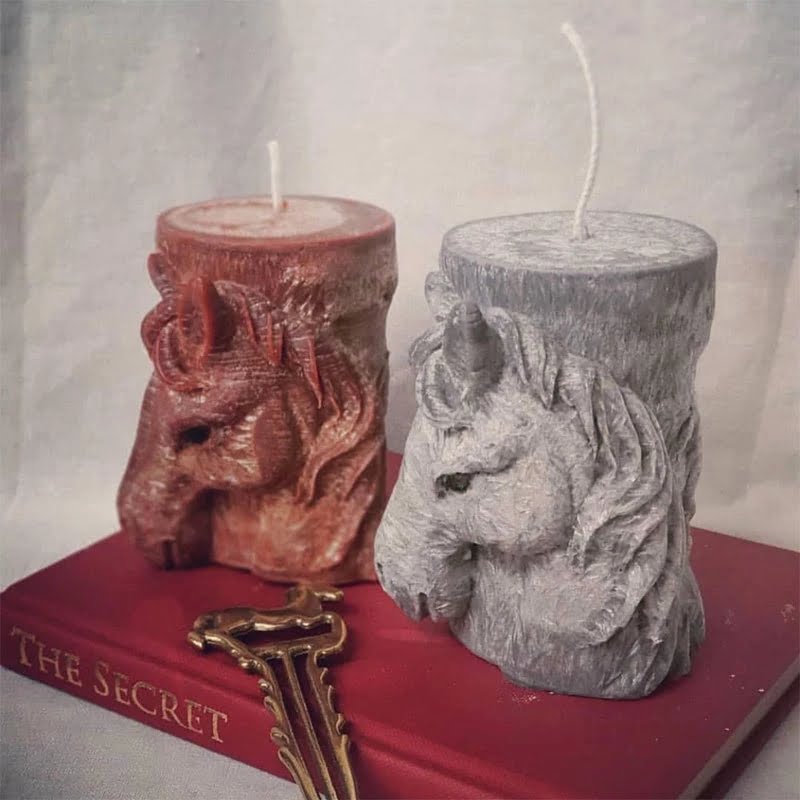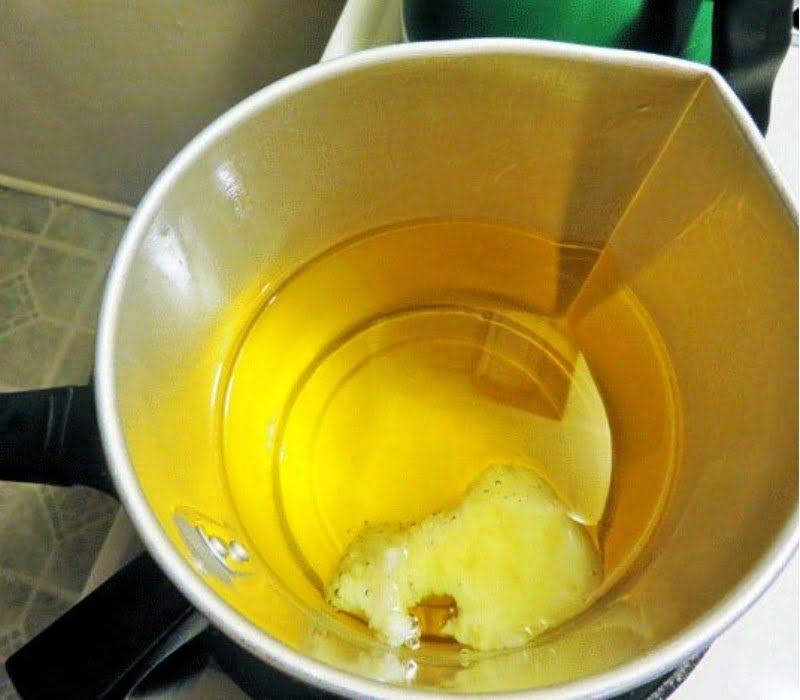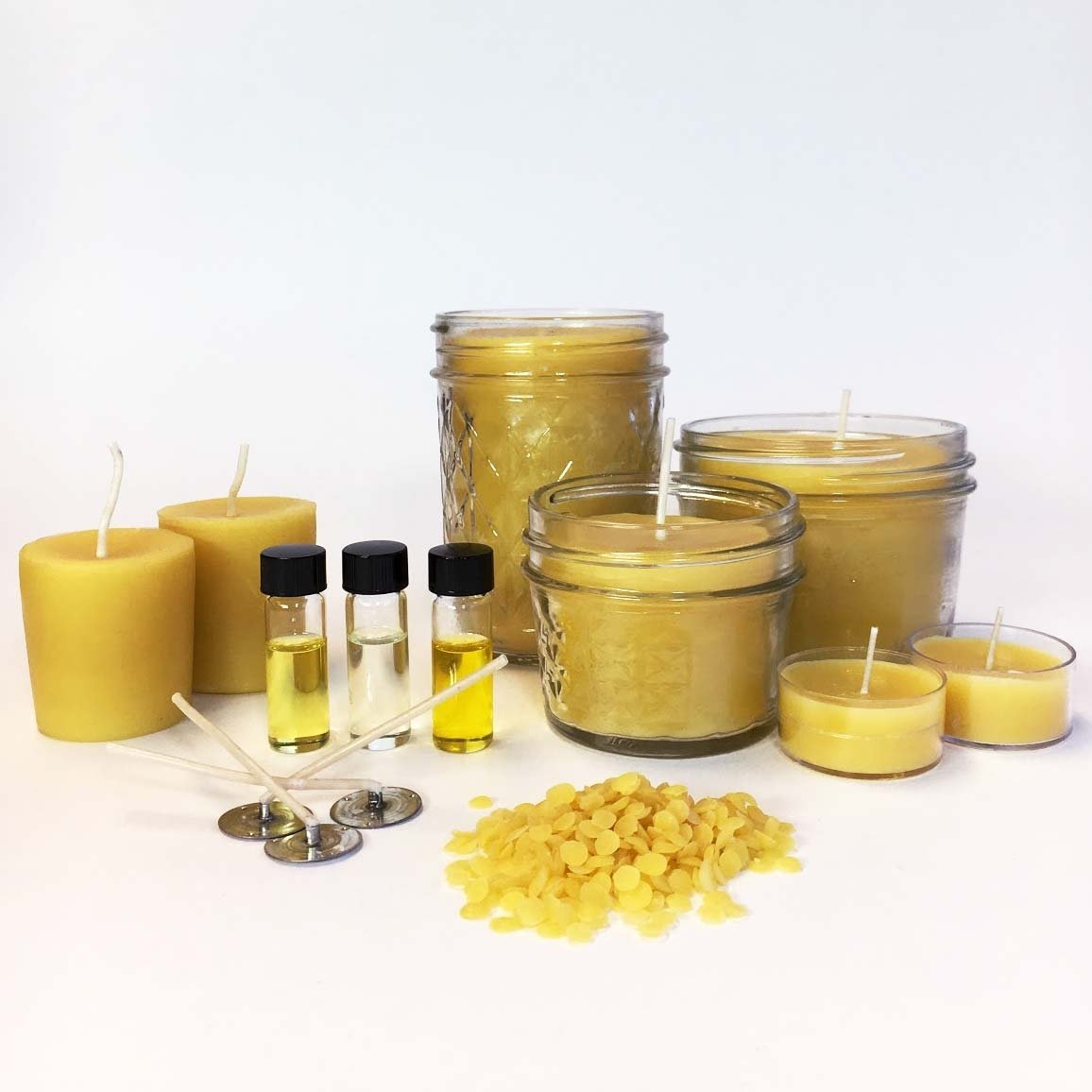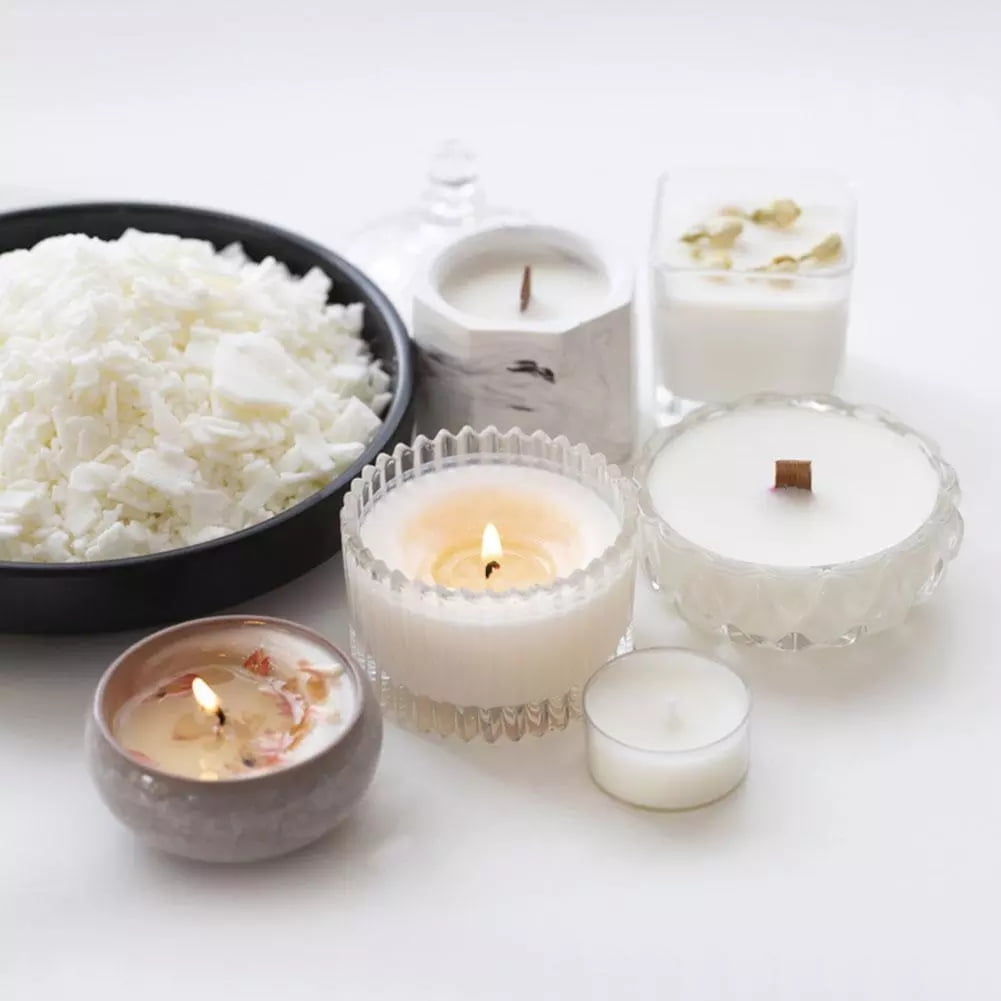Candle making is an ancient art that has been passed down through generations, captivating people with its ability to create both light and fragrance. One of the main reasons why candle making remains popular today is due to the versatility of adding essential oils to create unique scents. Essential oils are concentrated plant extracts that not only provide exquisite aromas but also offer various therapeutic benefits.
Essential oils have become a staple in the world of candle making for several reasons. First and foremost, they add a layer of personalization, allowing individuals to tailor their candles to suit their preferences. With an endless variety of essential oils available, each possessing its own distinct scent profile, candle makers have the freedom to experiment and create their signature fragrances.
Furthermore, essential oils contribute to the overall well-being of individuals through aromatherapy. These precious botanical essences have been recognized for their various therapeutic properties, such as relaxation, mood enhancement, stress relief, and even aiding in better sleep. By incorporating essential oils into candles, one can experience the benefits of aromatherapy while enjoying a gentle flicker of light.
In this article, we will delve deeper into the fascinating world of candle making and explore why essential oils have become so popular among candle enthusiasts. We will examine different types of candle-making processes and how they interact with essential oils. Additionally, we will discuss key factors to consider when choosing essential oils for candle making and provide expert recommendations on blends that elevate both aesthetic and scent experiences.
Join us as we uncover the endless possibilities that come with combining two cherished crafts – candle making and aromatherapy – and learn how any essential oil can be utilized in creating beautiful handcrafted candles.
The Basics
Candle making is an art that involves various processes, each with its own unique characteristics and compatibility with essential oils. Understanding these different types of candle making processes will help determine which ones are suitable for incorporating essential oils.
One common type of candle making process is the container candle method. This involves pouring melted wax into a container, such as a glass jar, and adding a wick. Container candles are known for their versatility and ease of use, making them an excellent choice for beginners. They are also compatible with a wide range of essential oils, as the oils can be added directly to the melted wax before pouring it into the container.
Another popular method is the pillar candle method, which involves creating freestanding candles without the use of containers. Pillar candles are versatile in terms of design and size, but they require more skill and patience to make compared to container candles.
When using essential oils in pillar candles, it’s important to consider that some oils may have a higher melting point than the wax used. This can result in inconsistent scent distribution or even cause the essential oil to evaporate before the candle has fully burned.
Finally, there’s the votive candle method, which produces small cylindrical candles that are typically placed in a decorative holder or votive cup. Votive candles have a shorter burn time compared to other types of candles but offer a charming ambiance when lit. Essential oils can be used in votive candles by either adding them directly to the melted wax or by applying them to pre-wicked votive molds.
To summarize, when it comes to essential oil compatibility in candle making:
- Container candles are generally compatible with all types of essential oils.
- Pillar candles may require careful selection of oils with lower melting points.
- Votive candles can utilize various methods depending on personal preference.
It’s important for candle makers to experiment and find what works best for them and their desired scent experience.
Essential Oil Essentials
When it comes to choosing essential oils for candle making, there are several key factors to consider. These factors will not only determine the success of your candle making process but also the quality and fragrance of your final product. Here are some important considerations to keep in mind when selecting essential oils for candle making:
- Quality: The quality of the essential oil you choose is paramount. Look for oils that are 100% pure and sourced from reputable suppliers. Cheap or synthetic oils may produce an unpleasant scent or even be harmful when burned.
- Scent Strength: Consider the strength of the scent you want to achieve in your candles. Some essential oils are stronger than others and may require less quantity to achieve the desired fragrance. It’s important to note that certain scents, like citrus oils, tend to have a lighter aroma compared to floral or herbal scents.
- Burn Stability: Certain essential oils are more prone to evaporation or degradation when exposed to heat. It’s essential to choose oils that have a good burn stability, so their fragrance lasts throughout the burning process of your candle.
- Compatibility with Wax: Different types of wax have varying degrees of compatibility with essential oils. While soy wax generally blends well with most essential oils, other waxes like beeswax or paraffin may require specific considerations. Be sure to test small batches before committing to a large-scale production.
To make it easier for candle makers, here is a list of popular essential oils often used in candle making:
- Lavender: Known for its relaxing properties, lavender essential oil is favored for creating soothing and calming candles.
- Eucalyptus: With its fresh and invigorating scent, eucalyptus essential oil is often used in candles intended for aromatherapy purposes.
- Citrus Oils (such as orange or lemon): These zesty and uplifting scents are great choices if you’re looking for a burst of energy and freshness in your candles.
- Sandalwood: Renowned for its warm and woody aroma, sandalwood essential oil adds a touch of luxury to candle creations.
Remember to always consult fragrance guidelines, particularly if you plan on selling your candles commercially. Additionally, consider the potential allergenic effects of certain essential oils and ensure proper labeling and usage instructions for your customers’ safety. By carefully selecting essential oils that meet these key factors, you can create beautifully scented candles that delight both yourself and others.
The Compatibility Test
When it comes to incorporating essential oils into candle making, it is important to consider their compatibility with the different types of candle making processes and their effects on wax color and texture. Not all essential oils are suitable for use in candles, as some may not adhere well to the wax or may cause discoloration or texture issues.
To ensure a successful outcome, it is crucial to conduct a compatibility test before adding essential oils to your candle-making recipes.
One way to perform a compatibility test is by conducting a scent throw test. Simply melt a small amount of wax and add a few drops of the essential oil you intend to use. Allow the wax to cool and solidify, then light the candle to assess its scent throw.
The scent throw refers to how far the fragrance can reach when the candle is burning. If you are satisfied with both the strength and quality of the fragrance emitted by your test candle, you can confidently proceed with using that particular essential oil in your larger batch.
Another aspect to consider during the compatibility testing phase is how different essential oils can affect the color and texture of your candles. Some essential oils, especially those derived from citrus fruits like lemon or lime, have phototoxic properties that can cause discoloration or fading when exposed to sunlight.
It is recommended to conduct a patch test by exposing a small portion of your finished candle to natural light for several days. This will allow you to observe any potential changes in color before committing to using that specific essential oil in large quantities.
In addition, certain essential oils may have an impact on the texture of your candles. For instance, heavier oils like patchouli or vetiver may result in a more textured appearance due to their thicker consistency.
On the other hand, lighter oils such as lavender or bergamot tend to blend more seamlessly with wax and maintain a smoother texture. By conducting compatibility tests that include varying concentrations of each essential oil, you can determine which oils produce the desired texture in your candles.
Insider Tips
Choosing the Right Essential Oils
When it comes to choosing essential oils for candle making, it is important to select ones that not only provide a pleasant aroma but also have unique aromatherapy benefits. Different oils can have various effects on mood and emotions, so it is essential to consider the desired result when making your selection.
One popular option for relaxation and stress relief is lavender essential oil. Its soothing scent has been known to promote calmness and restful sleep. For those looking to create a cozy atmosphere or aid in meditation, frankincense and sandalwood essential oils are excellent choices. These woody scents help create a serene environment, encouraging feelings of peace and introspection.
For an uplifting and energizing ambiance, citrus oils like lemon and orange are fantastic additions. These vibrant scents invigorate the senses and promote positivity. Additionally, eucalyptus essential oil is a common favorite when aiming to clear the airways or alleviate congestion.
Blending Essential Oils
To truly elevate the sensory experience of your candles, experimenting with different essential oil blends can open up a world of possibilities. Combining scents allows you to create unique aromas that reflect your own personal style or cater to specific occasions.
One delightful blend is lavender with chamomile essential oil. This combination offers both relaxation and tranquility, perfect for winding down after a long day. Alternatively, if you want to evoke a tropical vacation vibe, mixing coconut with lime and vanilla essential oils can transport you to an exotic paradise.
Getting creative with essential oil blends not only enhances the fragrance but also adds depth to your candles’ aromatherapeutic properties. It’s important to remember that when blending, you should use testing strips or sample jars first to ensure compatibility and balance between the scents before pouring them into your candles.
Using Essential Oils Sparingly
While it can be tempting to add a large amount of essential oil to your candle to achieve a strong scent, it is crucial to use them sparingly. Essential oils are highly concentrated and can overpower the candle’s fragrance or even interfere with proper burning.
A general guideline is to use about 1 ounce (30 milliliters) of essential oil per pound of wax. This ratio ensures a good scent throw without compromising burn quality. Additionally, some essential oils may cause discoloration or affect the texture of the wax, so starting with smaller amounts and gradually increasing until you reach the desired aroma is recommended.
By following these insider tips and recommendations from experts in the field, you can create beautiful candles that not only fill your space with delightful fragrances but also provide unique aromatherapy benefits. Remember to experiment, have fun, and let your creativity shine through as you explore the vast world of essential oils in candle making.
Creativity Unleashed
Unlocking the Power of Blending
When it comes to candle making, essential oils offer a myriad of possibilities for creating unique and captivating scents. One way to enhance the aesthetic and scent experience of your candles is by exploring the art of blending different essential oils together.
Blending essential oils allows you to create complex and harmonious aromas that can’t be achieved by using a single oil alone. By experimenting with different combinations, you can unleash your creativity and develop signature scents that truly stand out.
Pairing Essential Oils
To create well-balanced blends, it’s important to understand the fragrance profiles of different essential oils and how they interact with each other. Some oils naturally complement each other, while others may clash or overpower one another. When selecting essential oils for blending, consider their top, middle, and base notes. Top notes are more volatile and provide initial freshness and lightness to the blend; middle notes provide body to the scent; while base notes add depth and longevity.
A good rule of thumb is to select oils from each category to form a well-rounded blend. For example, you can combine uplifting citrus top notes like bergamot or grapefruit with floral middle notes like lavender or rose, and anchor the blend with warm and earthy base notes such as patchouli or sandalwood. Experimentation is key in finding the perfect balance that suits your preferences.
Create Signature Scents
While there are no hard rules when it comes to blending essential oils for candles, some popular combinations have become go-to choices for many candle makers. Some examples include:
- Lavender + Vanilla: This classic combination creates a soothing aroma that promotes relaxation.
- Citrus + Mint: The zesty freshness of citrus paired with the coolness of mint creates an invigorating scent perfect for energizing spaces.
- Cedarwood + Patchouli: These earthy and woody notes blend together to create a warm and grounding scent that is often associated with tranquility.
Don’t be afraid to experiment with unique combinations of your favorite essential oils to truly make your candles one-of-a-kind. Remember to keep detailed records of your blends so that you can replicate successful combinations in the future. Ultimately, blending essential oils allows you to unleash your creativity and elevate the aesthetic and scent experience of your candles.
Safety Measures
When it comes to using essential oils in candle making, safety should always be a top priority. While essential oils offer a plethora of benefits and aromatic qualities, they can also pose certain risks if not handled properly. To ensure a safe and enjoyable candle-making experience, it is crucial to follow some important precautions and best practices.
Firstly, it is important to note that not all essential oils are suitable for candle making. Some essential oils may have a low flash point, which means they can ignite easily when exposed to high temperatures. It is vital to research each essential oil and determine its suitability for use in candles. Additionally, some essential oils may have lower melting points than the wax being used, resulting in poor scent throw or even causing the candle to burn improperly.
Another safety measure to take into consideration is the dilution of essential oils. Using undiluted essential oils directly in your candles can lead to an overpowering scent or potential skin irritations when the candles are burned. It is recommended to dilute essential oils with a carrier oil or adhere to recommended usage rates specified by reputable suppliers.
Furthermore, it is crucial to handle and store essential oils properly. Essential oils should be stored in dark glass bottles away from direct sunlight and heat sources, as exposure to light and heat can cause them to degrade and lose their potency over time. Additionally, it is important to keep them out of reach of children and pets.
By adhering to these safety measures and best practices, you can enjoy the benefits of using essential oils in your candle making without compromising on safety. Always remember that knowledge about the specific properties of each essential oil and proper handling techniques will help create a safer environment for both you and those who enjoy your finished candles.
Overcoming Challenges
When it comes to incorporating essential oils in candle making, there can be a few challenges that may arise. However, with the right knowledge and troubleshooting techniques, these challenges can be overcome. This section will explore some common issues that candle makers may face when using essential oils and provide solutions to address them.
One common issue is the difficulty in achieving a strong scent throw with essential oils. Essential oils have different levels of potency, and some may not be as strong as others. To overcome this issue, it is important to choose essential oils with a higher concentration of fragrance compounds.
For example, citrus-based essential oils such as lemon or orange tend to have a stronger scent throw compared to floral or herbal essential oils. Additionally, increasing the amount of essential oil used in the candle recipe can help enhance the scent throw.
Another challenge that candle makers may encounter is the potential for discoloration or change in texture of the wax when using certain essential oils. Some essential oils contain natural pigments that can cause the wax to change color or become cloudy. To prevent discoloration, it is recommended to use fragrance-approved dyes specifically formulated for candle making. If cloudiness occurs, adding a small amount of a transparent dye or mica powder can help restore clarity to the wax.
Furthermore, another issue that may arise is poor burning performance when using certain essential oils. Some essential oils contain components that can hinder proper combustion and lead to an unstable flame or excessive smoking. To solve this problem, it is crucial to choose essential oils that are known for their compatibility with candles and have been tested by reputable sources. Conducting small test batches before committing to larger quantities can also help identify any performance issues early on.
To summarize, incorporating essential oils in candle making may come with its share of challenges including weak scent throw, discoloration or change in texture of the wax, and poor burning performance. By selecting potent essential oils, using fragrance-approved dyes, and choosing essential oils known for their compatibility with candles, these challenges can be overcome.
With a bit of troubleshooting and experimentation, candle makers can successfully incorporate a wide range of essential oils into their creations, enhancing both the aesthetic appeal and aromatic brilliance of their candles.
| Challenge | Solution |
|---|---|
| Weak scent throw | Choose essential oils with higher concentration of fragrance compounds |
| Discoloration or change in texture of wax | Use fragrance-approved dyes or add transparent dye/mica powder to restore clarity |
| Poor burning performance | Select essential oils known for compatibility with candles; conduct small test batches before using larger quantities |
Stepping it Up
One way to take your candle making skills to the next level is by incorporating advanced techniques that allow for a perfumer’s touch. This means utilizing essential oils in unique ways to create luxurious and artisanal candles that stand out from the rest.
One technique to consider is layering different scents using essential oils. By carefully selecting complementary aromas, you can create a multi-dimensional fragrance experience within your candles. Start by choosing base notes, such as sandalwood or patchouli, which provide a solid foundation for the scent. Then, add middle notes like lavender or rosemary to bring balance and complexity. Finally, top it off with lighter and more volatile scents such as citrus or mint to create an uplifting and refreshing finish.
Another advanced technique involves experimenting with different scent ratios to achieve a perfect blend. Essential oils have varying strengths and intensities, so it’s important to find the right balance when combining multiple scents. Start by creating small test batches with different ratios of essential oils until you find the desired fragrance profile. Remember that less is more – sometimes a subtle hint of scent can be more effective than an overpowering aroma.
Additionally, you can explore the world of rare and exotic essential oils to create truly unique candles. These specialty oils are derived from plants that are not commonly found in mainstream products, giving your candles a distinctive character. Essential oils like ylang-ylang, neroli, or frankincense can add depth and complexity to your creations, making them truly artisanal.
By employing these advanced techniques and experimenting with different essential oil combinations, you can elevate your candle making hobby into an art form. Embrace the creative process and let your imagination run wild as you use essential oils to craft luxurious and one-of-a-kind candles that will delight all those who encounter them.
Conclusion
In conclusion, the use of essential oils in candle making opens up a world of aromatic brilliance and allows for the extension of boundaries in this craft. Throughout this article, we have explored the different types of candle making processes and their compatibility with essential oils. We have also highlighted the key factors to consider when choosing essential oils for candle making, such as scent strength, longevity, and safety.
Furthermore, we have examined the applicability of different essential oils in candle making and their effects on wax color and texture. Insider tips from experts have been shared, providing recommendations on essential oils that not only enhance the aesthetic experience but also offer unique aromatherapy benefits.
Moreover, creativity has been unleashed through the exploration of unique essential oil blends that elevate both the scent and aesthetics of candles. Safety measures have been emphasized to ensure that precautions are taken when using essential oils in candle making.
The article also addresses common challenges that may arise when incorporating essential oils into candle making, providing troubleshooting tips to overcome these issues. Lastly, advanced techniques for utilizing essential oils to create luxurious and artisanal candles have been discussed.
In summary, by utilizing a wide range of essential oils in candle making, one can take this craft to new heights. The possibilities are endless in terms of scent combinations and creative designs. So go ahead and explore the aromatic brilliance that essential oils bring to your candle-making endeavors.
Frequently Asked Questions
What essential oils are safe in candles?
When it comes to using essential oils in candles, it’s important to choose ones that are safe for candle-making. Some commonly used and safe essential oils for candles include lavender, eucalyptus, citrus oils like lemon or orange, peppermint, and cinnamon.
These essential oils not only provide pleasant aromas but also tend to have good stability when mixed with the wax. Additionally, they often have a lower risk of causing skin irritation or respiratory issues when burned.
Are all essential oils good for candles?
While there is a wide range of essential oils available, not all of them are suitable for making candles. Certain essential oils may have properties that make them unsuitable for candle-making due to their chemical composition or potential to cause irritation or adverse reactions when burned.
For example, some floral essential oils like ylang-ylang or rose can be too delicate and may not retain their scent well during the burning process. It’s crucial to research and ensure the specific essential oil you plan on using is safe and suitable for candle-making before adding it to your candle recipe.
Can I use any fragrance oil to make candles?
Unlike essential oils, fragrance oils are specifically manufactured for candle-making purposes. While some fragrance oils may contain natural components extracted from plants, they often include synthetic ingredients as well.
Not all fragrance oils are created equal, so it’s necessary to use fragrance oils specifically formulated for candle-making instead of simply any kind of fragrance oil that comes across your path. It’s recommended to choose high-quality fragrance oils designed for candles since they are formulated to withstand the heat produced by burning and provide a consistent aroma throughout the entire burn time of the candle.

Welcome to my candle making blog! In this blog, I will be sharing my tips and tricks for making candles. I will also be sharing some of my favorite recipes.





